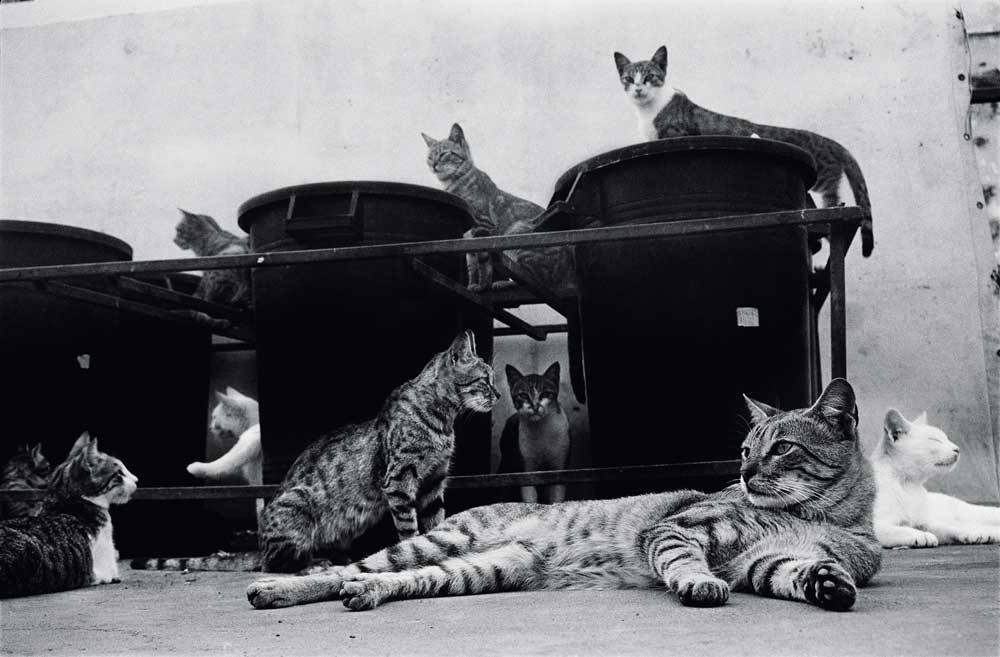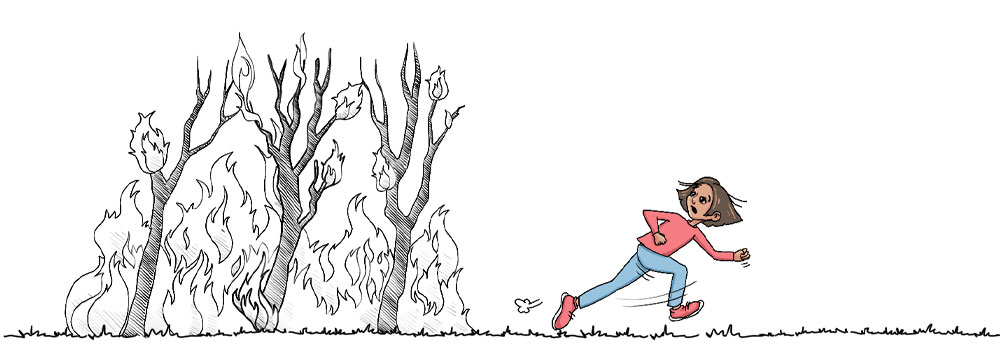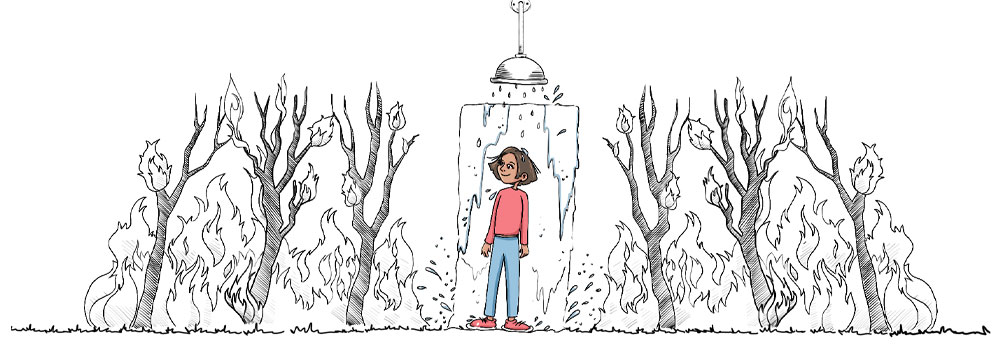Task 16 – Make use of the spaces
Task 16
Make use of the spaces

Procida, Italy, 2000. Photo: Torkil Færø
Problem
A stress-packed schedule
We can hardly open a newspaper or scroll down Facebook’s news feed without coming across an article about how stress makes us sick. Many people’s daily lives are filled to the brim with demanding activities while others suffer the effects of having a frenetic mindset. Stress hormones then surge through our bodies. Cortisol hinders the immune system so that it isn’t able to do its job. Energy-intensive, body-related maintenance work is put on hold while tasks related to acute, life-threatening situations are prioritized. Over short periods, intense stress is both necessary and empowering. A problem arises when this state of stress lasts over a long time. Cancer cells, infections and inflammatory reactions meet lessened resistance. Stress causes both physical and psychic illness.
Stress is harmful when its is continuous and combined with a feeling of not being in control. However, being busy while feeling in control does not cause stress or illness.
It is not just the body that needs space. Our creativity also comes to a halt when we are in a situation where something has to happen all the time. We need the creative spaces in between where nothing is going on. That is when our subconscious is working for us and when the good ideas appear. This can happen when we are taking a walk, driving a car, knitting or taking a shower, i.e. when we are busy with some routine task. Then our brains enter a creative mode and the stress hormones take a break.
We need to take back these spaces and the natural breaks. It is not without reason that most religions have one day that is free each week, or that monks seek silence in order to think. It is often on days off that new ideas arise. When something is happening all of the time, nothing actually happens. It is when nothing happens that anything can happen!
Do you know someone who suffers from uncontrollable stress without having a break from it? Do you know someone who is busy but still makes sure to include breaks? What about you?
On a scale of 1 to 6, how relevant is this issue for you?:

Solution
Finding space
In photography, the spaces in-between, the negative spaces, can often be just as important as the picture’s main subjects. In many cases this can be what distinguishes a good picture from an ordinary one. In music, the spaces between tones create the rhythm. In films, we need a break between dramatic moments in order to collect ourselves. And in our lives we need pauses from the action to enjoy a good life rhythm. We need spaces during the course of a day, a week and a year. For it is during these breaks, when the brain gets to relax, that the ideas that will solve our problems appear. For example, this book did come into existence while only sitting in front of a computer. The composing of it came to me just as much while driving in the car, taking a shower or walking along the river.
Our photos will often be bad if the only thing that captures our attention while taking them is the main subject. It is easy to become overly fixated on the subject. We must not for- get that an important part of our task as photographers is to work out the negative space. At first, this may feel unusual, but with a little practice it will be an instinctive part of the process.
When you remember how important space is in the pictures, maybe it will occur to you more often that you also need them in everyday life. Avoid looking at your cell phone on the metro, just study your surroundings and breathe slowly.
Laura Ingalls Wilder, who wrote Little House on the Prairie, knew a woman who had an extremely hard and challenging life. When asked how she managed to endure things, she revealed that she would lie completely still on the floor for a half hour each day.
PHOTO ASSIGNMENT:
Search for the spaces in your life – at your office desk, between objects, among people, in nature – and find a rhythm in these spaces. The rhythm that you have is certainly sufficient.
On a scale of 1 to 6, how useful was this task for you?:
BOOK SUGGESTION: Silence: In the Age of Noise by Erling Kagge

❞ How much better is silence; the coffee cup, the table. How much better to sit by myself like the solitary sea-bird that opens its wings on the stake. Let me sit here for ever with bare things, this coffee cup, this knife, this fork, things in themselves, myself being myself.
Virginia Woolf
❞
The best time for planning a book is while you’re doing
the dishes.
Agatha Christie
❞The best ideas come when we stop brood- ing, when we let go and leave the thoughts to themselves. Then some magical power shuffles everything around in your brain until the answer comes.
Christina Bernd
[note_editor]

